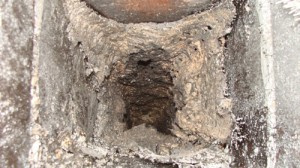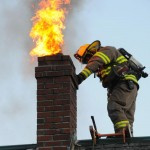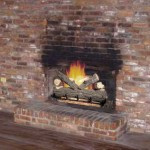 WHY DOES A CHIMNEY NEED SWEEPING?
WHY DOES A CHIMNEY NEED SWEEPING?
Smoke from a wood fire is simply unburned chemicals. As smoke rises through your chimney, these chemicals cool down, adhere to the inside walls of the chimney and become solid, flammable particles called creosote. The longer you burn a dirty chimney, creosote accumulates at an increasingly fast rate. The chimney can become clogged, affecting draft (how quickly smoke rises through the chimney).
 As we’ve learned, creosote is flammable. All it takes is an errant spark from your fireplace or wood stove, and the chimney can catch fire. It’s a frightening experience, with a roaring sound like a freight train driving through your house! The fire may not be contained to the chimney, catching the roof and nearby walls on fire and resulting in devastating loss.
As we’ve learned, creosote is flammable. All it takes is an errant spark from your fireplace or wood stove, and the chimney can catch fire. It’s a frightening experience, with a roaring sound like a freight train driving through your house! The fire may not be contained to the chimney, catching the roof and nearby walls on fire and resulting in devastating loss.
WHEN DOES A CHIMNEY NEED CLEANING? The National Fire Protection Association (NFPA) recommends that all chimneys be inspected annually and swept when needed, generally when the creosote is 1/8th inch thick.
WHAT TYPES OF CHIMNEYS NEED TO BE SWEPT? If your chimney vents an appliance that burns wood, coal, pellets or oil, it can build up deposits that need to be cleaned from the chimney flue and any connector pipes. A recent study by the NFPA (March 2012) reports that when a residential fire occurs due to a solid fuel burning appliance, the fire was NOT contained within the pipe in 48% of occurences. So when we sweep your chimney, we also clean out the connector pipe attached to your freestanding stove or oil furnace.
 Soot above the fireplace indicates a faulty draft in this chimney that could be exposing you to carbon monoxide. Turn off the gas logs and call us right away so we can help you remedy this problem.
Soot above the fireplace indicates a faulty draft in this chimney that could be exposing you to carbon monoxide. Turn off the gas logs and call us right away so we can help you remedy this problem.
If you have a fireplace with gas logs installed, you also need the chimney inspected. While gas soot isn’t highly flammable, a frequently burned log set can cause a considerable soot buildup that can cause blockages and poor draft which may result in spillage of fumes and carbon monoxide in your home.
If you burn gas logs, a tremendous safety concern is seeing soot stains above or around your fireplace opening. Inspect the room further by moving pictures and if you see soot stains, stop burning your gas logs and call us right away. Sooting outside of your fireplace ALWAYS indicates a draft problem with your chimney. Think of it this way: soot is carbon, and when you see soot in your home it also means there has been carbon monoxide in your living space!